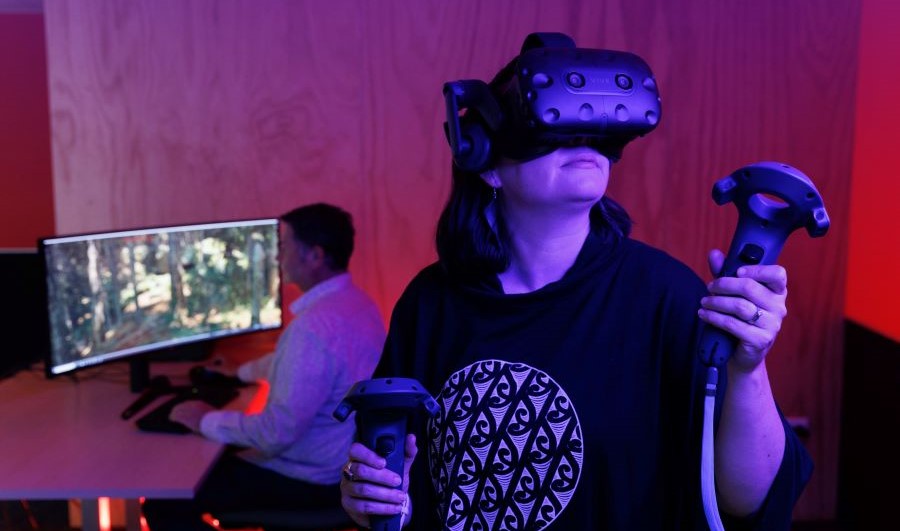Tapping into unlimited potential of virtual reality
How a virtual reality (VR) and gaming engine could add another tool to the forestry training kit.
A future where new foresters are trained to thin trees from the safety of a virtual reality forest before more advanced real-world training could be just around the corner. And the technology to get us there could also be used for training skills across the forestry industry. Scion’s Virtual Thinning project uses an off-the-shelf game engine with in-house tweaks and programming to create an interactive and 3D virtual reality training tool.
The tool would supplement on-site training allowing initial tuition before workers go into forestry blocks. The project is funded by the Precision Silviculture Programme managed by Forest Growers Research.
Trainees who put on the virtual reality headset find themselves in the middle of a computer-generated forest model reflecting a realistic production forest in New Zealand.
The images are based on physics-based models of Pinus radiata and multiplied so there are 50,000 trees. Randomisation formulas are applied to make each tree unique.
Development of a beta version of the tool began last year and the team aims to have a prototype by mid-year.

‘The scenarios are unlimited’
Scion portfolio leader Grant Evans says the tool makes training logistically easier and faster given travel to sites is not needed, safer and also means losses are not suffered as mistakes made in virtual reality don’t affect real forestry blocks.
“VR has been around a long time in entertainment. Now people have started to see the real applications.”
Options for the tool are limitless. “Levels” can be created to make choosing which tree to thin easier or harder. Variables can be changed to adjust stocking rate, tree species and age. There are decades of tree bioinformatics available to draw on and more than 70 potential variables.
Scion forest management scientist Lania Holt, who is involved in thinning research for the Precision Silviculture Programme, says a tool like this could improve thinning processes and health and safety. It could also allow training in a broader range of scenarios than the conditions in accessible forests on any given day.
Precision Silviculture Programme manager Claire Stewart says the tool fits with the programme’s aims of digitising, mechanising and automating forestry tasks to make them more efficient and safer.
She says the VR tool could also help trainees initially understand complexities without the immense pressure of a forest environment and help them understand the economic value in forests.
“Thinning is one of the most critical tasks within the life of the forest ... It’s where you can add or subtract a lot of value.
“When you’re in the forest deciding which tree to thin you might not realise it is such an important decision.”
Stewart says the technology also paves the way for teleoperation of the future and sets the foundation for how these technologies will need to work.

The future opportunities
Holt says Scion’s role has been to prove the concept could work – the next steps should come from industry. She suggests it could be rolled out at a training institute, or the technology could be rented for training purposes.
Work also needs to be done to test the human experience and impacts of being trained in this format.
“Normally we study human factors with people in forests, now we want to understand human factors with this technological approach to training,” Holt says.
Stewart says the forest environment needs to be replicated in a way that allows trainees to become immersed and understand the task.
“If that proves to be successful there are many other tasks in the forest beyond thinning that would benefit from this training – pruning, establishment tasks, surveillance and monitoring, harvesting and processing.
“We are fully committed to exploring new interactive and digital ways of training and attracting the workforce.”
